This letter appeared in Raid the Archive: The de Menil Years at Rice. I was told it would make me cry with disappointment at what could have been.
At the Rice Media Center that evening I also saw Chris Sperandio, who I know I can count on for untempered criticism of art in Houston, but he also works to improve it. For example, organizing a slide jam of Rice faculty and Core fellows. It may have still been in a closed off, cave like courtyard, but at least he got these folks out of the shadows and sharing more with the community. Also, after events in the Rice Media Center he’s done away with the sequestering of visiting artists into long tables of insider invitees and expensive tabs, and instead catered pasta for everyone there, audience and artists, to mingle over. He asks why the CAMH doesn’t have a space to show emerging local artists and makes me wonder why I’ve never even thought of it as an option on my path.
He is not rare, though, as an example of someone trying to promote generosity, dispersal of resources, and wider access to arts education locally. Currently this generosity is on the shoulders of nonprofit arts admins and college faculty who do a crazy amount of work to get impermanent support that they largely pass right back out to artists. I’d like to give some thanks for the programs that have sustained my ongoing education for the past three years and share them with anyone interested. It’s my answer to why, although surprised and excited at all that was the Art Barn, this letter in particular doesn’t make me miss much. We have all that is on this list, not at Rice or St. Thomas necessarily, but in a decentered, lateral way across Houston.
Jennie Ash also has her eye on it :
“Identified as the nation’s single most ethnically and culturally diverse metropolitan city to live in by Rice University’s Kinder Institute for Urban Research, and rated by the Huffington Post as the most moved-to city in America for people ages 25 – 34, Houston is currently in an exciting state of flux. This is especially true for Houston’s art community, which is continually reinventing itself; growing in size and strength. According to Guidestar, Houston has the largest number of small to mid-sized nonprofit arts organizations in Texas (35) with Dallas, San Antonio, and Austin all coming in under 20. If you look at that on a per capita basis; Houston in terms of density of art organizations is closer to New York city with a total of 163 small to mid-sized nonprofit art organizations.”
Because of this presence in Houston, lately I’ve felt like I’m in school, just not enrolled. This past week was a whirlwind of free education: the Mitchell Center/Blaffer and Lynne McCabe’s open-to-civilians class hosted a panel with Jacki Apple, and Shannon Jackson, The Blaffer/UH Art Department’s Materiality Lecture Series hosted Diana Al-Hadid, Rice Art Department hosted Terri Kapsalis’s The Hysterical Alphabet, The Rice English Department hosted Michael Fried. To wrap it all up the Art League finally got awesome with STACKS, and the super dense CAMH show kicked off with two performances on Friday night.
The abundance of such programming informs my answer when I get asked where I got my MFA, then why I don’t have an MFA, and then when I will get my MFA. They ask but they already know the rule: Don’t get your MFA unless it’s paid for, and the complaint: There are way too many MFAs out there.
I’ve also been scared off by the evidence that getting your MFA gives you grad-school-itus, the symptoms of which I understand to include:
making frustrated, overmanicured work
paranoia that peers will undercut your conceptual foundations
eagerness to problematize your peer’s work so you can prove your own critical tenacity
debt
shock of re-entering a world that does not revolve around art
a compulsion to make your ideas extremely complicated
On the other hand, with an MFA you do get:
The credentials to teach at a college level.
A community of critically engaged peers, good conversation, stimulating dialog.
Access to a network.
Studio time.
Facilities.
This last list sounds great, right? Except maybe the ability to teach at a college level – which loses its appeal as I watch the security of art school faculty evaporating along with tenure and healthcare. Isn’t there a better way to support overworked faculty who are underpaid and expected to be actively showing/publishing while also being an on call counselor/critic/champion of you and your work? Is there a way to support these existing programs that I benefit from without all the extra overhead? Friends of mine who have comfy jobs were hired to build or overhaul art departments on campuses far from where they want to live.
I want to live near my family, friends, and sweetie, so I wonder how I can keep my brain working while I’m also working and planning for a future when my rent may be more than $400.
Art school graduated me in 2009 with next to no “professional development,” unless you count terrifying stories of job scarcity. Our career services/alumni resource center seemed to mostly support the careers of the people who had full time jobs producing a binder of “resources” (basically grant and residency lists also found online) and asking us for money to pay down the debt of building a new dorm to hold 40% more entering freshmen when existing students already couldn’t squeeze into classes and facilities.
Most of what I know about working as an artist I learned from a patchwork, low cost, ongoing education here in Houston.
When I moved back home with a BFA, I strung together lots of low-paying, bad-treatment jobs teaching kids for very little money. I worked for the Census (actually an awesome gig), nannied, babysat, juried high school art competitions, painted sets for community theater, and painted signs for my dad. I lived rent free with my boyfriend until my Mom passed and her leftover health insurance money allowed me to pay him back. I heard how everyone had the Writers in the Schools hookup and I was fortunate enough to be hired by Art League for a similar program that teaches art in HISD Title 1 schools.
Labotanica was in full swing then, Ayanna was talking about alternative economic models and artists taking good care of themselves. Once School of Latitudes started (funded by $10 application fees) everything opened up for me.
We had field trips to Sharon Engelstein‘s studio, the Screw Shop, and Caroline Collective. We had artist talks by Christopher Cozier and Carlos Pozo, and professional development workshops with Sarah Kellner and Crystal Benavides. It was a mix of getting current and inspired with contemporary art conversations, and practical advice on how to live as artists. We collaborated on projects, produced a culminating show, and formed a group that is still in touch. The “curriculum” matched or exceeded what is taught in more formalized and expensive versions of artist professional development. This is not to knock institutions and all they provide, just to spotlight how artist run projects can be really in touch with how to serve artists. For example, one workshop I attended paid a marketing professional whose advice included “put your artist name on koozies.” The marketing workshop for School of Latitudes included visiting Israel McCloud‘s studio where he told us: 1. Charge people according to how much money they have and how much money you need, 2. Artists are the most kick ass humans on the planet so stop apologizing and demand what you’re worth, and 3. Keep making the work and keep showing it, you can do it on a sliding scale, but don’t do it for free. His ubiquitous sign paintings remind me daily of the confidence he talked into me.

School of Latitudes collectively compiled resource list
For four years Diverseworks DW2 was a series of workshops for 20-40 artists per six months. I participated in its last iteration and benefited most from its long format, small group structure, and that they paid for Creative Capital to do a weekend long internet workshop with Eve Mosher, Steve Lambert, and Dread Scott. I was lucky in having Lillian Warren as my small group mentor who also piloted a Creative Capital Master Class with 6 artists over 6 months. DW2 is succeeded by “DiverseWorks On Wednesdays, a weekly evening “mash up” of cultural activities, and Diverse Discourse, a series that brings internationally-renowned arts professionals to Houston to give free public lectures and conduct studio visits. These programs are advised by a reinvigorated Artist Board comprised of prominent Houston artists working in all disciplines.” Some of the content lost in the transition is probably covered in Creative Capital’s webinars. If one person pays the $20, then has a few folks over to watch who pitch in and email out the recording link afterwards, it’s pretty close to free.
As mentioned, the main help is meeting up with people who ask you how your projects are going on a regular basis. On that note, Marisa R Miller hosts a monthly crit group.
FreshArts (then Spacetaker) has artist development workshops that cost $10 or so, with pizza, and cover practical issues. They also host Artist Speakeasy, a good way to broadcast to and hear from peers around the city.
Project Row Houses always has artist talks, workshops, potlucks, and performances.
Nameless Sound‘s Dave Dove will let you into his Youth Ensemble experimental music classes at MECA.
Voices Breaking Boundaries gives free workshops to public school teachers.
Throughout all this time, Skydive also had some intermittent free schools, and is now publishing a compilation of vanguard projects. Back in 2010, Sasha Dela let me sit in for the Skype artist lectures she brought to her Art and Activism class at UH, it was my first clue that the Mitchell Center’s IART major at UH was doing something interesting.
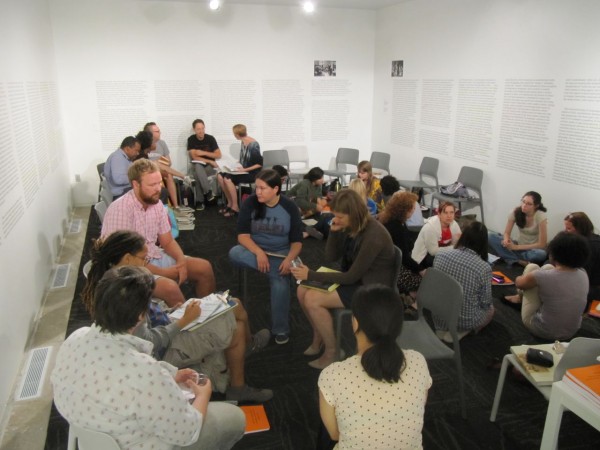
Room to be (Ms.)Understood group work
Image courtesy Lynne McCabe, Room to be (Ms.)understood, and Ruth Robbins
One current example is Lynne McCabe‘s Room to be (Ms.)understood: A Social Sculpture Workshop and UH class/Blaffer exhibition/Mitchell Center experiment that allows students and non-students to excavate an untold feminist side of social practice history. We’ve had Skype-ins from Leslie Labowitz and Carolina Caycedo and a lot of group work and discussion. Although this class is wrapping up, John Pluecker‘s Antena Books (installed at Project Row Houses Round 36) may be on the agenda for the space in 2014.
Occasionally, one can sneak onto The Core Program island via their lecture series. Thankfully they’ve brought on Gabriel Martinez, who with Kelly Sears teaches another IART class. They are also launching Alabama Song, an artist run space in Third Ward that hosts visiting artists and workshops.
Another Core fellow, Anthea Behm, taught a Contemporary Art Practices class that I learned a lot from last Spring. With a groupon for Glassell it was $120 for 6 weeks, but she may teach in a living room style in coming months.
Paula Newton and Peter Lucas’s essay reading group at the CAMH was at times excruciatingly repetitive, at times excitingly dynamic. Nonetheless I miss how real it got in there with a grab bag of people and an excuse to keep on reading. Now there’s a much more polite group that is also private because they meet in people’s homes instead of a more shared space.
I guess what you need to take advantage of this many disparate resources is a bossy inner nerd, no qualms about sneaking into classrooms, and free time. What all this has gotten me might not be enough for a lot of people, but I’ve had consistent support from Houston arts institutions, a feeling that I can reach out and find someone with advice in almost any form I seek, and a good trip to the brain gym at least once a week.
On one hand this fractured, de-centered structure takes a lot more work than just getting a class schedule. I’m always wondering how I, as an artist, got to be such a posterchild for a neoliberal, hyperproductive self-made-worker with an endlessly retooled skill set, and personality that thrives on freedom (eh-hem, precarity). I think they got me at doing what I love. I try to get them at standing up for it.
I’m not advocating for dissolving MFA programs, I love school. If that Rice letter had come true, and had funded its students the way other departments at Rice do, I would be drooling and not writing these words. But while holding my breath for accessible education, I find the current model not just over expensive but also worn out. I like learning on evenings between earning and making. I like having new ideas collaged in and out of regular life, rather than amassing all the knowledge in a bubble for a while, then figuring out how to deploy it afterwards. I like that the people in this town surprise you when they talk about their art. It comes out of left field instead of a predictable, sometimes stale global-art-discourse. I also think that artists as agents of change might have more impact if we form community from shared interest and the premise that we all have knowledge and skills that we can exchange regardless of how much money we can pay for it.
Houston, if anywhere, is poised to model this. We have several thriving economies; oil and gas, the port, medicine, and technology. We have rich people who like weird art. Now I realize that my daddy, my granddaddy, your husband, your boss, your banker, your funder, your board all have ties to the oil and gas business, that is how it is, we are in Houston, Texas. What we also have is a lot of creatives who come from or through here and do good things because of, around it, despite it, or past it- depending on your point of view. For example, Mel Chin is raising money for soil cleanup in a career helped along by the Rockefeller Foundation. My aforementioned ArtBound! job is funded by the 5% that Target gives back to communities. Despite realizing that the school of long sneers at impure support has good points, taking advantage of this support while imagining past it is one tactic available during this funky overlap.
There’s a grace in the way that cowboys and artists can share a propensity for big ideas and getting away with them. There’s a joke in this hypercapitalist city being a place where big work can thrive, slide by, or simply not get caught.
I really think education is the next big overhaul, and when I think of how much I’ve learned in the unofficial Houston school of art, I think this might be a good place to continue the experiment.


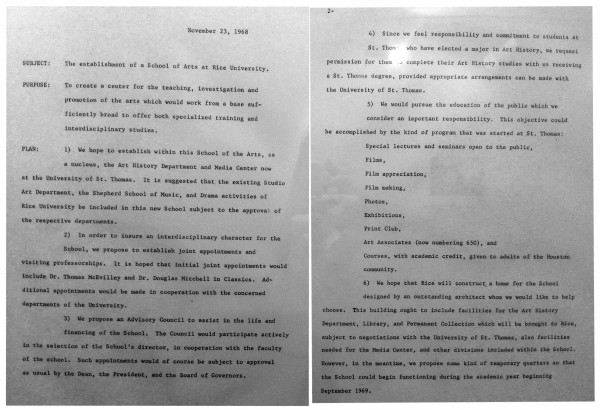
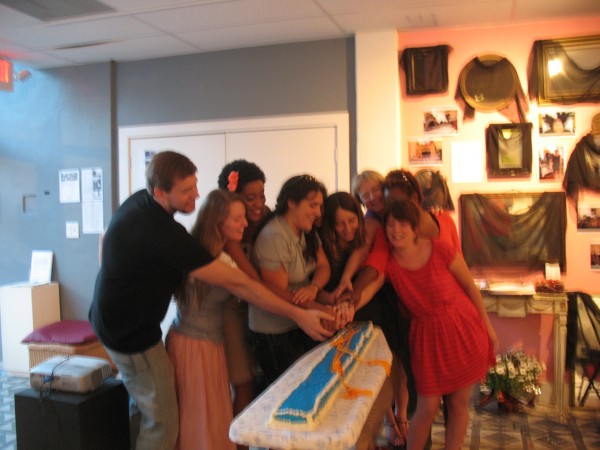
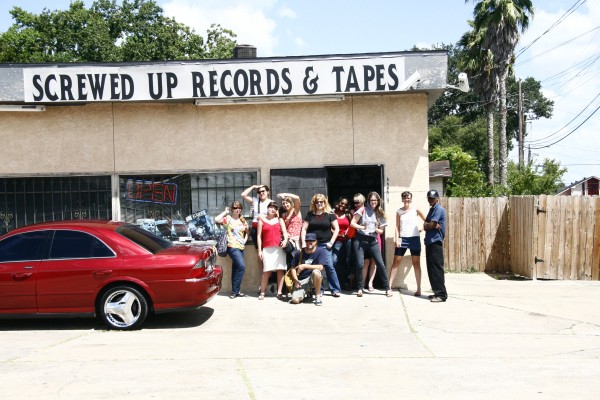
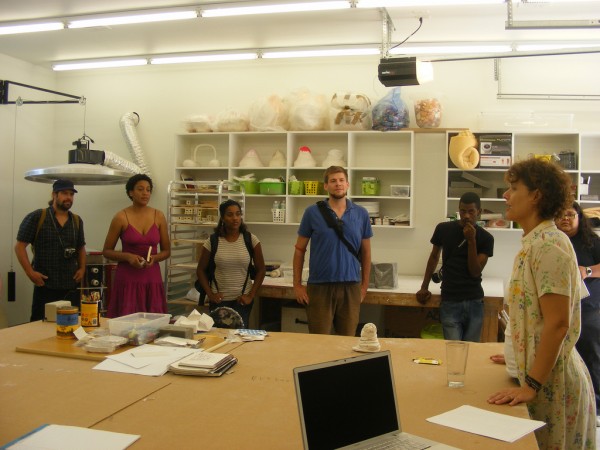
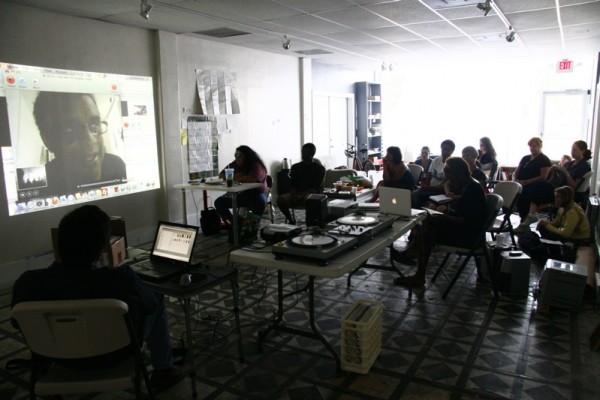
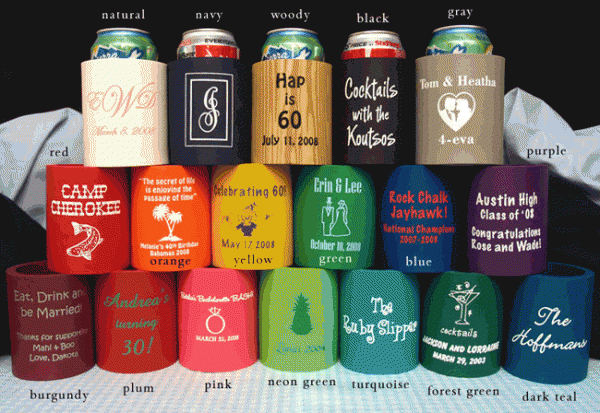

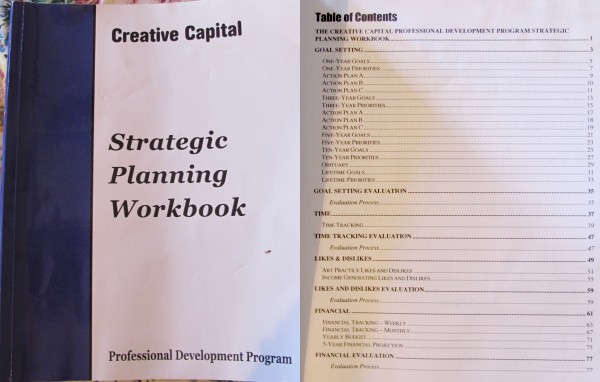


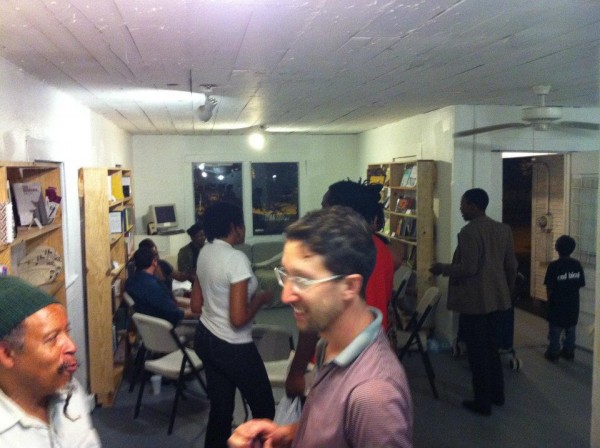
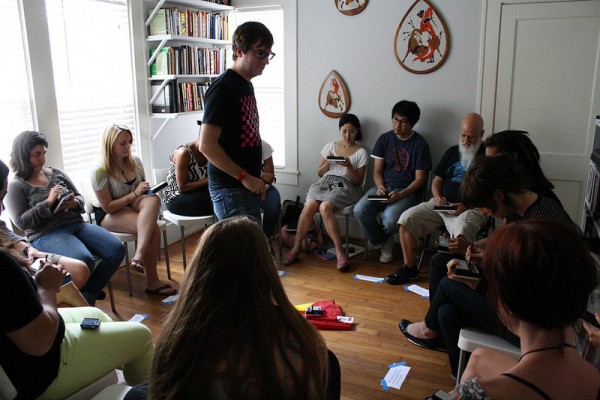

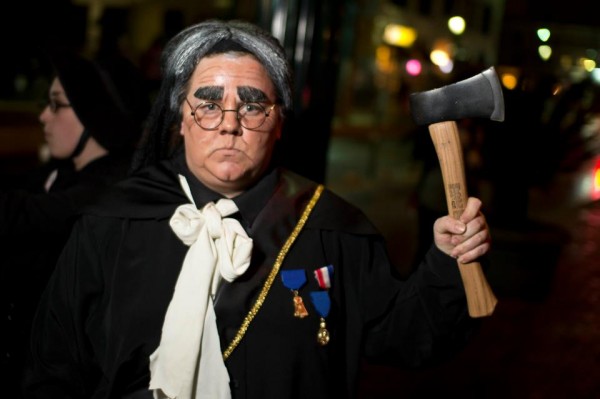

2 comments
Sherman Alexie reads tomorrow, Monday morning 10 am at HCC Southwest
5601 West Loop South
Houston, Texas 77081
The de Menil’s vision expressed in this proposal was not “what could have been” but more like what WAS. A goodly number of these goals were achieved with the establishment of the Institute for the Arts in 1968 and the Media Center in 1970. Art history professors like McEvilley, William Camfield, Walter Widrig, and Mino Badner. The hands-on art “teaching collection” at St Thomas and at Rice, which was later subsumed into the Menil Collection, and a vast art library which still resides at Fondren Library. I could go on. But one point in relation to all these contemporary community-sourced groups you mention. One of John de Menil’s leading principles was interacting with the community, evangelizing about art and the betterment of the human condition, an egalitarian oilman amongst the 1%. Maybe hard to believe today but in the late sixties access to media recording devices syncing picture and sound was almost entirely limited to professionals. The Media Center made the first Sony video Porta-paks available to all comers, and developed in-house a unique Super-8 system with synchronized recording capability for small cost. Such community outreach was part of what made for an uneasy alliance between the Rice administration and the de Menils, since Rice was still keeping at arm’s length the world “beyond the hedges.” Ultimately the departure of Menil support did result in situation that could be described as “what could have been.” But embers from those golden years still linger in Houston’s cultural DNA.